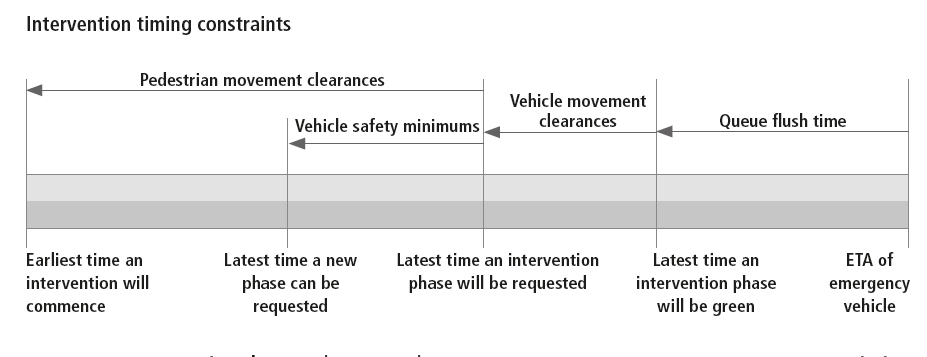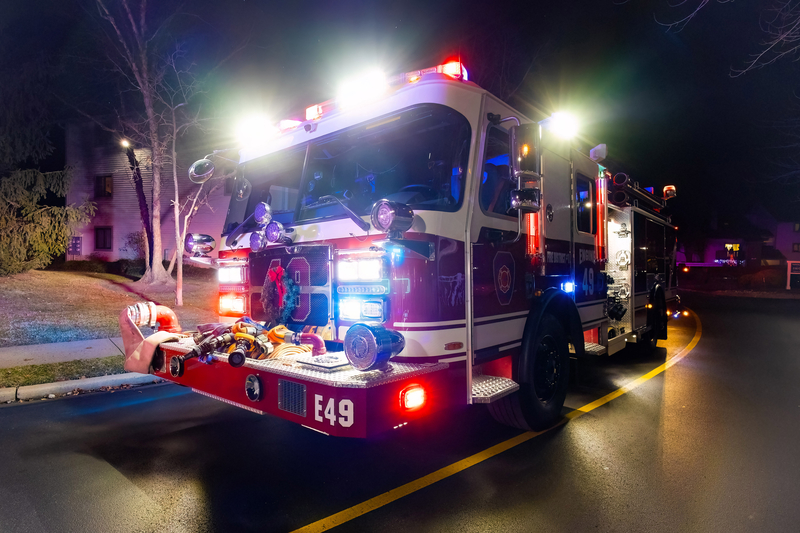
Following encouraging results from an initial small-scale trial of an emergency vehicle priority system in Queensland, Australia, the scheme is now being extended.
In an emergency every second counts. Nowhere is this more graphically illustrated than by the survivability statistics for the time to cardiopulmonary resuscitation of pre-hospital cardiac arrest: at four minutes the survival rate is 22% but by 14 minutes the survival has dropped to 5% - as can be seen from the graph below. There is a similar trend for fires where the response time can be directly correlated to fire temperature and spread, and therefore threat to life and property damage.
ITS solutions provider
The solution has been designed to work with existing technology to deliver an intelligent solution that does not add complexity to the workload of frontline officers and requires very little, if any, additional equipment in the vehicle.
The result is faster travel times and a safer work environment (including less stress for drivers due to navigating fewer red traffic lights) with minimal detrimental impact to other road users. Faster travel times are helping save lives on Queensland roads.
An initial pilot deployment was implemented in November 2012 in the city of Southport (population around 30,000), on the Gold Coast of Queensland (ITS International Nov/Dec 2013). In total 20 emergency vehicles (10 ambulances and 10 fire engines) have been participating in the ongoing trial encompassing 50 of Southport’s main intersections. Results of the trial have been very positive and the scope has now been expanded to 142 intersections.
Analysis of the trial results showed that travel times along major routes have been reduced by up to 20% without significant impact on the traffic network as a whole. All 20 EVP-enabled emergency response vehicles benefitted from the system, receiving more than 650 green traffic signals while responding to more than 120 incidents a week. Analysis shows the average improvements in travel time of the EV is approximately 20% along major routes.
In addition, the investment in EVP technology has improved frontline communications within and between the State Government and regional councils.
There have been further benefits from integrating critical traffic management systems with the core frontline information systems to maximise the information communications technologies.
Following the successful pilot, trials of the technology in other areas of Queensland have now commenced or are planned for implementation over the next two years.
There are 150 planned new EVP-enabled intersections at four Queensland cities. At the beginning of September, EVP-enabled ambulance and fire vehicles received more than 2,500 green traffic lights during more than 600 ‘Priority One’ incidents. As EVP is rolled out to more intersections and more vehicles, these numbers will continue to increase.
In Bundaberg, Queensland (population 71,000), traffic lights at 32 intersections in the city have been upgraded, with seven fire trucks and 14 ambulances from Bundaberg and surrounds having EVP technology installed.
In Brisbane, trials underway in several north-western suburbs are unique in that it is the first time the technology has been used on the Scats adaptive traffic control software system, which is the additional system used in Brisbane city for traffic signal control. If the Brisbane trial is successful the EVP technology could be considered in the 150 cities around the world that use the SCATS traffic signal control system.
To date, 27 Queensland Fire and Rescue Services and Queensland Ambulance Services vehicles from stations in eight north-western Brisbane suburbs have been fitted with EVP technology, with a total of 37 intersections involved in the trial. The full roll out to all Brisbane City Council-controlled intersections is expected to be complete in two years, with north Brisbane works due to be complete by 2015.
Across Queensland, EVP is now active at more than 40% of intersections (170) and all Queensland Ambulance Services (QAS) and Queensland Fire and Emergency Services (QFES) response vehicles on the Gold Coast. In the Bundaberg district all ambulances and fire rescue vehicles are EVP enabled as is all but one of its 32 intersections while north-west Brisbane has instrumented 40 intersections, 25 ambulances and two fire rescue vehicles.
Over the next two years there are plans to expand EVP to approximately 80% of intersections on the Gold Coast and all ambulances and fire rescue vehicles in Brisbane as well as the majority of intersections and all ambulances and fire rescue vehicles in Townsville (population 172,300). In regional towns Ayr and Home Hill (combined population 11,000), the Burdekin Bridge and all ambulances and fire rescue vehicles will be EVP equipped.
There will also be an EVP trial involving 10 police vehicles on the Gold Coast.
EVP requirements
While other EVP systems are deployed elsewhere, many require specialist hardware to be installed in emergency vehicles and at traffic signals whereas Transmax’s system has been designed to utilise existing infrastructure and in-vehicle equipment (mobile computers and GPS). In Queensland this equipment is already installed in emergency response vehicles and it uses the Transmax’s Streams traffic management system. Streams traffic management is used as part of the EVP and has bespoke functionalities for EVP including dynamic interventions for minimal traffic impact, pedestrian clearance protection, live monitoring at traffic management centres and user-configurable recovery algorithms.Queensland Emergency Services’ Vehicle Tracking and Intervention Request sub-system was designed and built across a number of components, including the in-vehicle software, vehicle communication, state management, route and ETA processing and Traffic Signal Intervention subsystem communication.
The Traffic Signal Intervention sub-system was integrated into the Streams traffic management system. It arbitrates requests received from the Vehicle Tracking System against other current traffic management operations and requests and, where appropriate, manages traffic signals to service the requests.
Without the need for human intervention the EVP identifies via two independent sources an emergency vehicle responding to a code 1 incident, tracks the location of that vehicle and calculates routes to the destination and estimated arrival times at intersections every two seconds. Every time the calculations are made the system sends a list of intervention requests to Streams. If the emergency response vehicle departs from a previously calculated route the system will cancel intervention requests as they are no longer required and recalculate ETAs to possible intersections even when no destination is known.
Having received an intervention the Streams system calculates when to change the traffic lights to clear queues ahead of the EV to allow clear passage while ensuring safe clearing of pedestrians and maintaining all other safety protocols. Once the EV has passed the system will quickly return the traffic lights to their normal operations and log the relevant information about the events for subsequent reporting.
In reducing emergency vehicle travel times, the technology is helping save lives while reducing stress for the emergency crews and lowering the potential for accidents when EVs have to pass through red lights. And by utilising existing infrastructure (using Streams and Scats traffic management) and in-vehicle equipment it achieves this while minimising the additional investment and reduces the need to increase the number of frontline officers to emergency response vehicles to maintain service levels.










